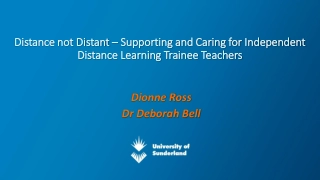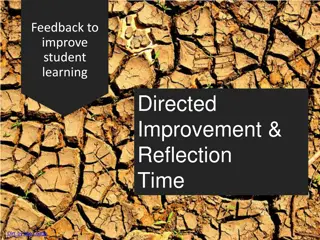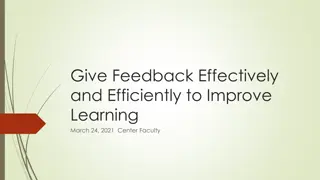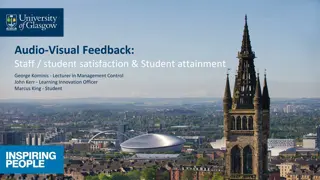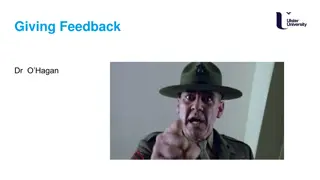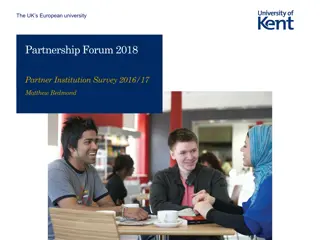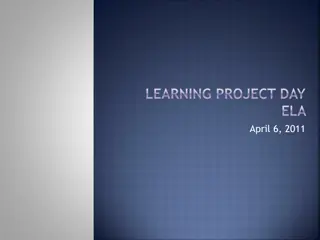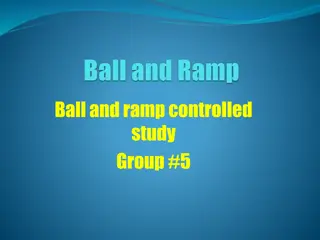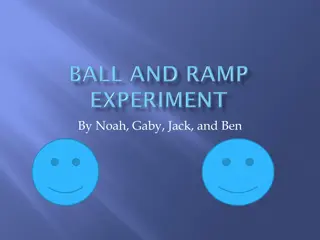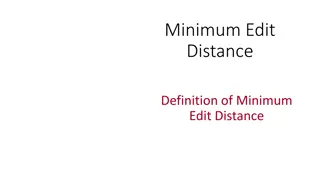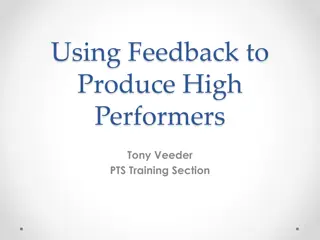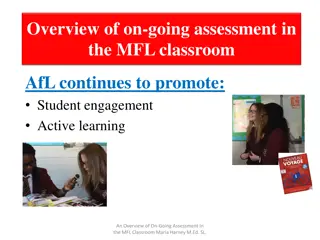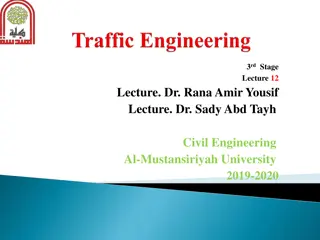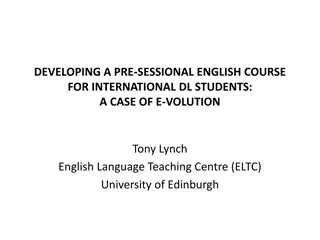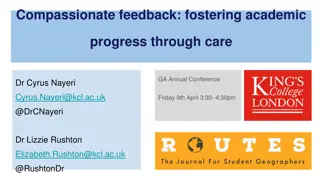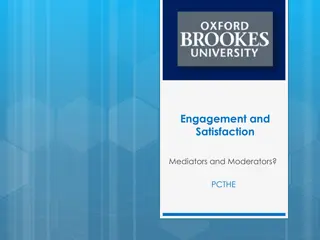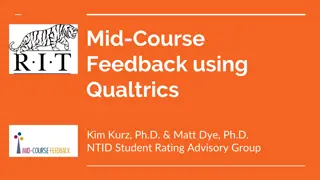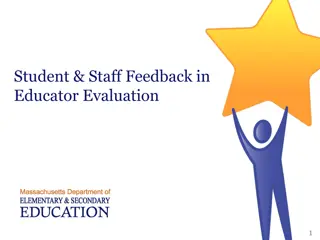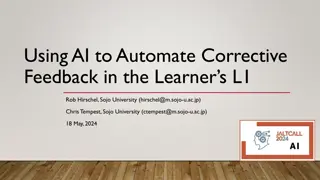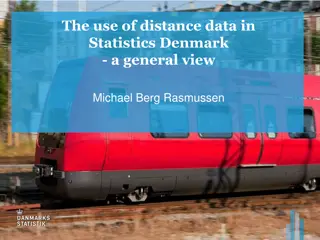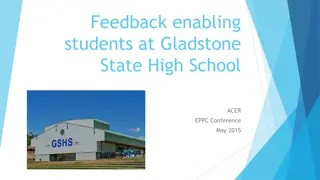Enhancing Student Engagement and Feedback in Distance Learning
Explore the strategies and objectives for engaging with students effectively in a distance learning environment. Focus on clarity, feedback, purpose, and learning intentions while adapting to the challenges of remote teaching. Emphasize the importance of clear communication, setting objectives, and letting go of traditional grading practices. Consider the use of text-dependent questions and critical thinking skills to support student learning and development.
Download Presentation

Please find below an Image/Link to download the presentation.
The content on the website is provided AS IS for your information and personal use only. It may not be sold, licensed, or shared on other websites without obtaining consent from the author. Download presentation by click this link. If you encounter any issues during the download, it is possible that the publisher has removed the file from their server.
E N D
Presentation Transcript
CLARITY AND FEEDBACK Engaging with students while learning from a distance Recorded 4/7/2020
4/7/2020 SESSION RECORDING: CLICK HERE Chat box - click here 2
Agenda Quick review Teacher clarity from article?? Objectives for learning Q4 Text-dependent questions Planning is key Ability to engage Capacity Purpose scope 4/7/2020 3
Focus, Purpose and Letting Go Begin with purpose how has our purpose changed? No new learning No grading Don t collect work Review and Practice Take attendance Collect work Grade for credit 4/7/2020 4
Focus, Purpose and Letting Go Focus - what are the big goals? What is possible? Consider the context Consider the tools available What is necessary? Foundations for next year? Credits? Other requirements? What is not possible? Cannot be done in this environment 4/7/2020 5
Focus, Purpose and Letting Go How to let go: Grieve Commiserate Acknowledge priorities Do what is best for students 4/7/2020 6
Text-Dependent Questions Critical for this environment Best for students - explain 4/7/2020 7
4/7/2020 TEXT-DEPENDENT QUESTIONS AND THE BIG OBJECTIVES Planning for the next steps 8
Objectives and Learning Intentions OBJECTIVE: DEVELOP EVIDENCE-BASED RESPONSES Learning intentions: Analyze appropriately complex text Summarize whole or parts Analyze for style, purpose, effect Prioritize value of evidence provided Determine what may be missing or unstated Synthesize information from multiple texts Summarize across texts Analyze for purpose, bias, style, effect Account for conflicting information 4/7/2020 9
HOW IS THIS CONTEXT DIFFERENT FROM YOUR CLASSROOM APPROACH? What are you letting go? What can you not do? 4/7/2020 10
Summarize This is hard and becomes hard again with more complex text! Annotating text digital format or paper copy Can you color code? Main topic or theme Claims or big ideas Crucial details or supporting evidence Key vocabulary or terms/phrases Highly charged language Irrelevant or unnecessary information 4/7/2020 11
Summarize and get feedback Feedback to advance learning should focus on the learning intention and success criteria. Focus on the elements of the text Did you notice that the text . . . ? Why did the author . . . ? What do these words mean . . . ? What might be another way of saying . . .? How would that effect the text? 4/7/2020 12
Summarize a simple strategy Create a 5 word summary Represent the text in only 5 words. This does not have to be a sentence or phrases, just 5 words. Work with 2 partners Share your 5 words then agree on just 5 words to represent the text from the whole group Describe the process of agreeing on 5 words Now write a summary of the text using the 5 words as a guide What is the added value? when/how do students get and give feedback? 4/7/2020 13
Summarize & Synthesize Look across multiple texts What is the same, what is different? Information Style structure, format Language - passive, impassioned? Summary reflects analysis more than bare content Summary also reflects best evidence 4/7/2020 14
Can students reflect on their own learning? (feedback to self) TO MAKE IT BETTER SUCCESS CRITERIA DONE WITH DISTINCTION Shows an understanding of the text s central idea(s) and of most important details and how they interrelate, demonstrating a comprehensive understanding of the text. Is free of errors of fact or interpretation with regard to the text. Offers an insightful analysis of the source text and demonstrates a sophisticated understanding of the analytical task. Offers a thorough, well-considered evaluation of the author s use of evidence, reasoning, and/or stylistic and persuasive elements, and/or other feature(s). Focuses consistently on those features of the text that are most relevant to addressing the task. 4/7/2020 15
TO MAKE IT BETTER SUCCESS CRITERIA DONE WITH DISTINCTION Shows an understanding of the text s central idea(s) and of most important details and how they interrelate, demonstrating a comprehensive understanding of the text. 4/7/2020 16
TO MAKE IT BETTER SUCCESS CRITERIA DONE WITH DISTINCTION Is free of errors of fact or interpretation with regard to the text(s). 4/7/2020 17
TO MAKE IT BETTER SUCCESS CRITERIA DONE WITH DISTINCTION Offers a thorough, well-considered evaluation of the author s use of evidence, reasoning, and/or stylistic and persuasive elements, and/or other feature(s). 4/7/2020 18
Objectives and Learning Intentions OBJECTIVE: DEVELOP EVIDENCE-BASED RESPONSES Learning intentions: Analyze appropriately complex text Summarize whole or parts Analyze for style, purpose, effect Prioritize value of evidence provided Determine what may be missing or unstated Synthesize information from multiple texts Summarize across texts Analyze for purpose, bias, style, effect Account for conflicting information 4/7/2020 19
Prompts 1. Explain how the author uses precise language to accomplish the purpose of the text. 2. Compare the information from the three sources and determine why some information may be conflicting. 3. Determine the essential characteristics of the author s style. Describe how a reader would recognize a work by this author. 4/7/2020 20
Focus, Purpose, Letting Go What are we letting go in this approach? How are we focusing with this approach? What else might we do? 4/7/2020 21
What, why, how Know what you want to teach and assess Know why this is what you want to teach and assess Consider how what are the tools you currently use What tools are exclusive to context (i.e. classroom or virtual) What tools might help you and your students move between the two 4/7/2020 22
For further exploration https://fordhaminstitute.org/covid-19-home-learning https://fordhaminstitute.org/national/commentary/planning- ela-age-remote-learning https://www.cultofpedagogy.com/distance-learning/ 4/7/2020 23
4/7/2020 24
4/7/2020 25
Next To get certificate of one contact hour for today, complete the quiz and answer yes to the last question. https://forms.gle/aPatGkDV5Nqq9A7q7 Take care of yourself. Take care of your family. Come back Thursday. 4/7/2020 26


